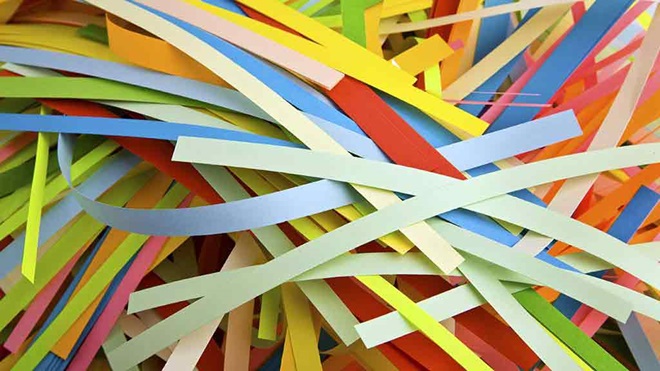When it's time to destroy some documents, you want to make sure that they're securely torn to shreds beyond the point of 'repair'. A good paper shredder will safely turn your content into confetti, with the added ability to break CDs, DVDs and cards into many pieces that can't be put back together.
On this page:
We're on your side
For more than 60 years, we've been making a difference for Australian consumers. In that time, we've never taken ads or sponsorship.
Instead we're funded by members who value expert reviews and independent product testing.
With no self-interest behind our advice, you don't just buy smarter, you get the answers that you need.
You know without hesitation what's safe for you and your family.
And you'll never be alone when something goes wrong or a business treats you unfairly.
Learn more about CHOICE membership today
Do I need a paper shredder?
You may think personal information you haphazardly throw out with the recycling is of no interest to criminals. Think again. Personal information such as your name, date of birth, bank account details and credit card numbers can be used by identity thieves to feather their nest at your expense, which is why effective document destruction is important.
Even seemingly innocuous information can help build up a personal ID picture that can be used to take money from your accounts or make fraudulent transactions. This can not only hit you in the hip pocket but could also affect your credit history or could even create a criminal record. All of a sudden the relatively cheap investment of a paper shredder looks like pretty good value.
Which paper shredder is the most secure?
Paper shredders will destroy your documents in one of three ways: they'll either strip cut, cross cut or diamond cut. These different methods affects the size and shape of the pieces, which has an impact on how securely the documents are destroyed. The smaller the piece, the higher the security level. Type of cut is also important, particularly if you need to destroy credit cards.
- Tip: Any shredding is better than none, but for good security aim for level three and above. As a guide, to achieve security level three, look for strips of no more than 2mm wide (any length) or piece sizes that are less than 320mm2 (or, roughly 6mm x 50mm).
| Type | Security level | Size of pieces | Shreds credit cards |
|---|---|---|---|
| Strip cut | 1 to 3 | Cuts into long strips usually 6–7mm wide | Generally no |
| Cross cut and diamond cut | 3 to 5 | Cuts into small pieces usually 2.7–6.9mm wide and 11–52mm long | Generally yes |
What else do I need to know?
If you're shredding a lot of documents in one go, features that reduce the workload and make the process easier will save you time. Here are the key features to look for:
- Ability to shred objects other than paper. Some shredders can handle staples, which will save you a lot of time removing them before shredding. Some models can also shred credit cards, CDs and paper clips. It's a good way to dispose of old credit cards and discs that may store sensitive data.
- The number of sheets a shredder can handle will affect shredding time. A typical shredder for home use varies from 5 to 13 sheets.
- Operating cycle. Shredders need to cool-down periodically. Most can only be used for a few minutes before needing a rest for 15 minutes or longer. If you only have a few pages to shred, that's not going to be a problem. But if you'll be doing a lot at once, check the specifications before buying.
- Ease of feeding. Look for an auto-start function on the controls. This means that the shredder will start automatically when it senses paper has been placed in the feed slot.
- Paper jams. A machine that jams up frequently will drive you crazy. Look for a reverse function on the controls which will aid in freeing-up paper jams.
- Emptying the bin. Check how easy it is to remove the shredding head. This can be quite heavy and difficult to grip, but many models require you to remove it to empty the bin. Strip-cut models produce bulkier waste and need their bins emptied more often than cross-cut machines.
- Safety. The blades should not be accessible, especially if you have kids about. The auto-start function could also be hazardous if hair or clothing gets caught, so make sure there's an obvious stop or off button. Some models have a feature that senses when a jam is occurring or when fingers touch the feed slot, and stops the blades.
- Stability. To avoid spilling paper pieces all over the floor, check how stable the whole unit feels. Some can be top heavy and easy to tip over.
How much do they cost?
Paper shredders can range greatly in price – from around $20 to $300 – and in performance.
Stock images: Getty, unless otherwise stated.



